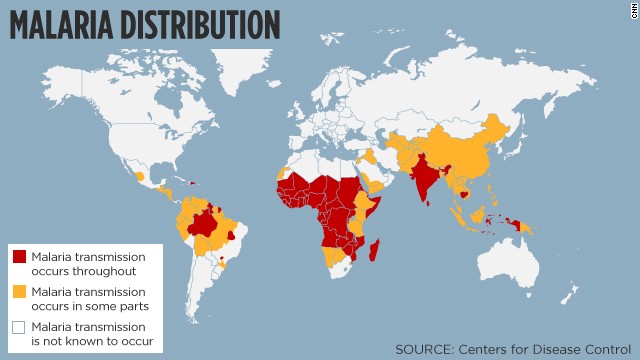Malaria transmission begins when parasites in the bloodstream of a human who is ill with malaria are ingested by a female Anopheles mosquito as she bites. Inside the mosquito, the parasites burrow through the mosquito’s gut wall. Once outside the gut, they multiply for 8 – 14 days, then migrate to the mosquito’s salivary glands, which are located in her head near her mouth parts. They remain there, waiting until the mosquito bites her next human victim.
The parasites are then transmitted to this person in a small amount of salivary fluid secreted by the mosquito as it feeds. After being transmitted into the person’s bloodstream, the parasites travel to the liver, multiply, and then move out to attack red blood cells. As the infection progresses, malaria parasites multiply in number and become abundant enough to be picked up by another Anopheles mosquito as it feeds. There are 4 different types of malaria parasites that cause disease. The most serious is called Plasmodium falciparium, which can cause severe anemia, kidney failure, brain damage and death.
Malaria was introduced in the Central Valley of California in the 1800’s by fur trappers as they traveled through the Sacramento Valley. It is thought that they picked up the disease in ports they visited in Central and or South America. By the early 1900’s, the problem was so bad mosquito control districts were formed to combat the disease by controlling Anopheles freeborni and Anopheles punctipennis mosquitoes. The combination of case recognition, treatment and successful mosquito control activities essentially eliminated malaria as a major health concern for many California residents in the early 1900’s. However, the persistence of Anopheline mosquitoes and the repeated importation of malaria in infected immigrants and travelers continues to pose a risk of transmission and re-establishment of malaria in our agriculturally based, mosquito-friendly Central Valley.

Click this link to view some fascinating movies on how Plasmodium parasites invade and destroy red blood cells.
